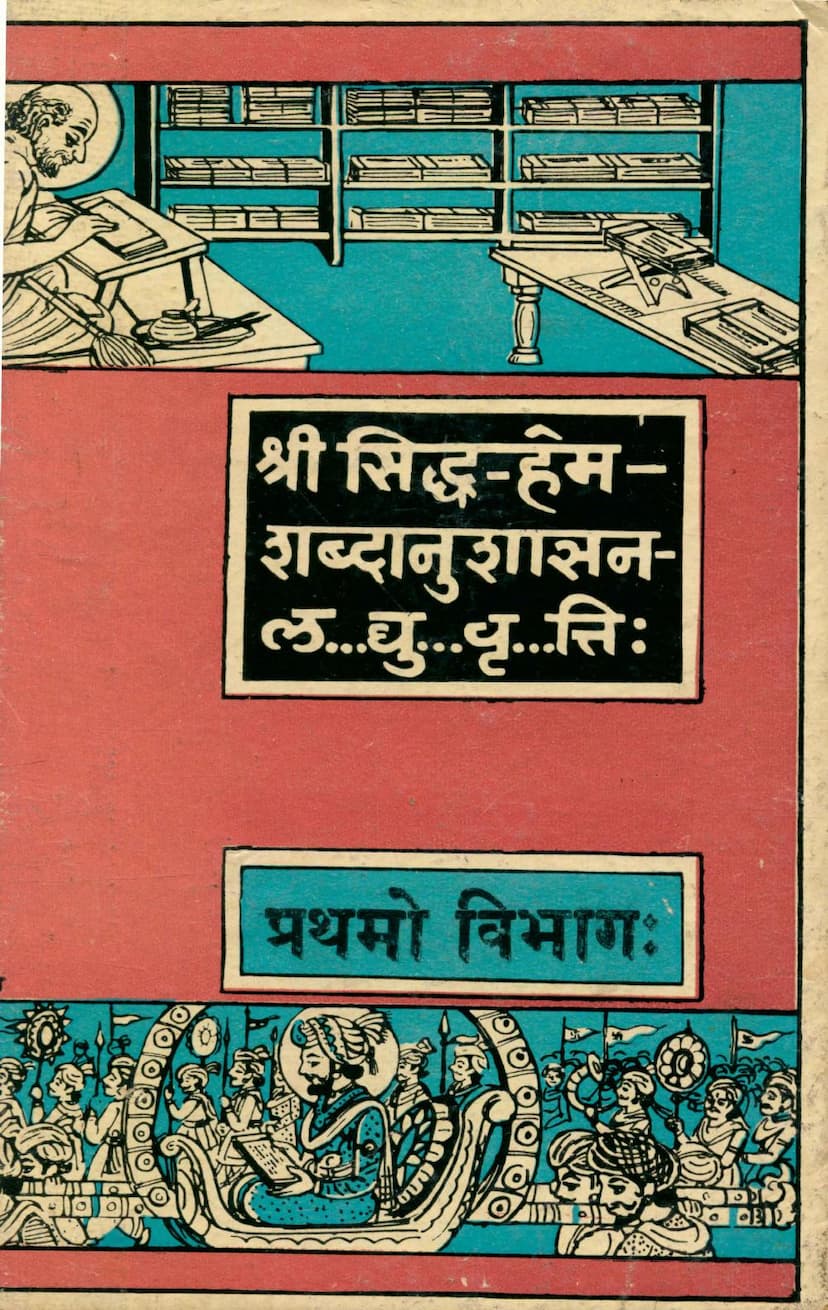Siddha Hemshabdanushasan Laghuvrutti Part 01
Added to library: September 2, 2025

Summary
Here's a comprehensive summary of the Jain text "Siddha Hemshabdanushasan Laghuvrutti Part 01" based on the provided pages:
Title: Siddha Hemshabdanushasan Laghuvrutti Part 01 Author: Jesingbhai Kalidas Trust (implied as publisher and likely facilitator) Publisher: Jesingbhai Kalidas Trust, Ahmedabad Catalog Link: https://jainqq.org/explore/023381/1 Content: This volume is the first part of a commentary (Laghuvrutti) on the renowned Jain grammatical treatise, Siddha Hemshabdanushasan, originally composed by Acharya Hemachandra. This particular commentary is also known as "Shat-sahasri" (meaning "of six thousand verses").
Key Themes and Content Covered in the Provided Excerpts:
-
Introduction and Purpose:
- The text emphasizes the importance of studying grammar (Vyakarana) directly from a guru's guidance for understanding the core principles of the Jain scriptures (Agamas).
- It highlights that the study of grammar is fundamental for spiritual progress, leading to purity of life, discipline, and the attainment of merits.
- The commentary is specifically designed to make the complex subject of grammar accessible, particularly for young monks and nuns (Balmunis and Tarun Shraman-Shramanis).
-
Historical Context and Patronage:
- The original Siddha Hemshabdanushasan was composed by Acharya Hemachandra in Vikram Samvat 1193 (100,000 verses).
- The Laghuvrutti (6,000 verses) was created at the request of King Kumarpala, who sought to improve his understanding of language and avoid linguistic errors. The text notes that even King Kumarpala studied it diligently, even during his palanquin journeys.
- The publication of this commentary is a benevolent act by the Jesingbhai Kalidas Trust, dedicated to the propagation of Jainism and knowledge. The trust continues the legacy of its founder, Jesinghbhai Kalidas Shah, who was inspired by Acharya Shri Vijay Nemisurishwarji Maharaj.
-
Editorial and Publishing Details:
- The publication is a revised and expanded edition.
- It lists the editorial team and acknowledges the significant effort in compiling and editing the grammar, especially considering its potential difficulty for young learners.
- The text expresses regret for unavoidable errors in the first part due to the editor's busy schedule and typesetting changes, and apologizes for them. A corrigendum (Shuddhipatraka) is provided at the end of the book.
- Gratitude is extended to the editor, Munishri Abhayasagarji Maharaj (a disciple of Acharya Shri Manikyasagar Surishwarji Maharaj), and all others who contributed to the printing and publication.
-
Grammatical Content (Siddha Hemshabdanushasan - Laghuvrutti - Part 1):
- Structure: This first volume covers the initial sections of the grammar, starting with phonetic classifications and proceeding through sandhi rules. It is divided into multiple sections (Adhyayas) and subsections (Padas).
- Key Topics Covered in the Excerpts:
- Phonetics and Vowels (Svarasamjna, Anavarna, Sandhyakshara, Anusvara-Visarga): Definitions and classifications of vowels, diphthongs, nasal sounds (Anusvara), and visarga.
- Consonants (Vyanjana): Classification of consonants, including their articulation points (sthana), effort (prayanta), and grouping into classes (varga) and their qualities (ghosha/aghosa).
- Sandhi Rules (Sandhi): Extensive rules detailing how sounds change when words combine. This includes vowel sandhis (like changes of 'a' to 'e', 'o', 'ar', 'al' when followed by other vowels), consonant sandhis (changes of consonants), and rules for prefixes (upasarga) interacting with root words.
- Pronouns and Case Endings (Sarvanama, Vibhakti): Rules pertaining to the declension of pronouns and the use of various case endings.
- Word Formation and Declension (Padam, Namani, Avyayani): Rules defining a "word" (padam), naming conventions (namani), and indeclinable words (avyayani).
- Other Grammatical Concepts: The text touches upon various aspects of Sanskrit grammar adapted for Prakrit and Jain philosophical contexts, such as the rules for "savarna" (having the same class), "samasa" (compounds), and other inflectional changes.
-
Jain Philosophical Underpinnings:
- The emphasis on careful speech (Bhasha Samiti) is a crucial aspect of Jain conduct, and grammar is presented as the tool to achieve this.
- The interconnectedness of spiritual practice (Samyama), knowledge (Jnana), and right conduct (Acharan) is implied throughout.
- The ultimate goal is liberation (Moksha), facilitated by right understanding and action, which begins with right speech.
In essence, the "Siddha Hemshabdanushasan Laghuvrutti Part 01" is an educational and devotional work aiming to preserve and propagate the accurate study of grammar, which is considered indispensable for understanding Jain scriptures and living a disciplined spiritual life. It is a testament to the tradition's commitment to rigorous scholarship and the transmission of knowledge across generations.